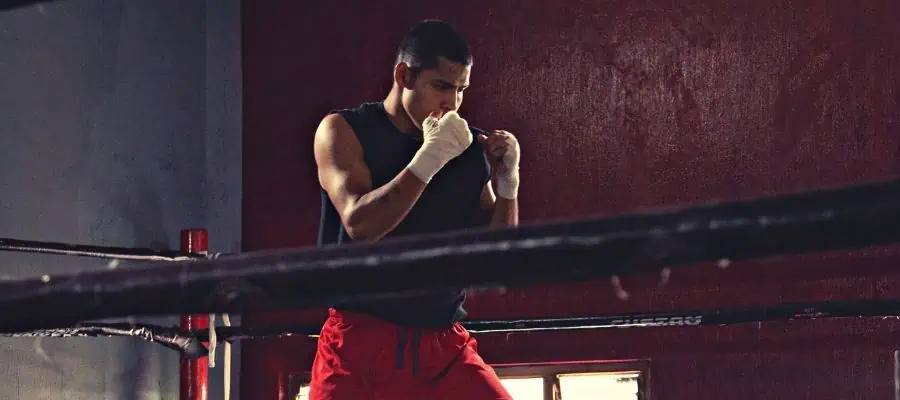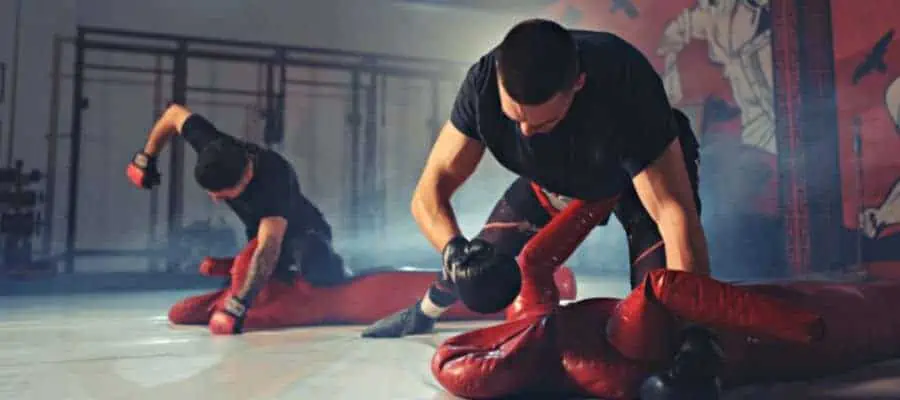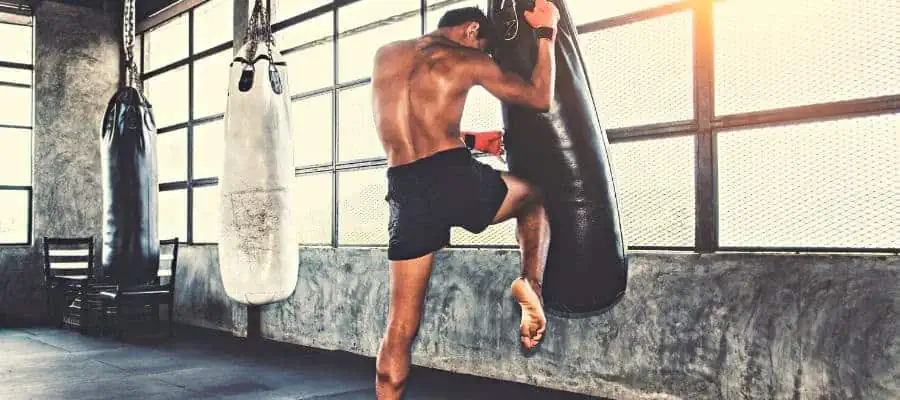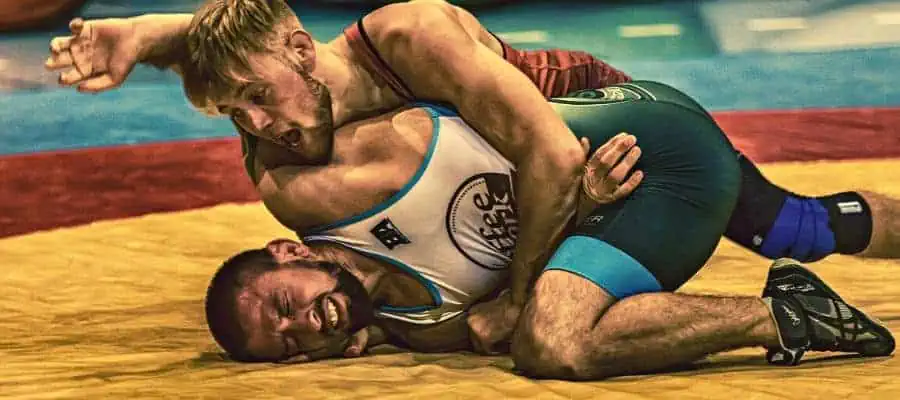Regarding martial arts, strength and power are crucial elements of success. Many martial artists use weightlifting to improve their performance in the ring, but is powerlifting a good choice? Powerlifting involves lifting heavy weights with low reps, making it a very different exercise than regular weight training. This article will explore the pros and cons of using powerlifting for martial arts performance.
Can powerlifting really help in martial arts? While there’s no one-size-fits-all answer as to whether or not powerlifting is suitable for you as a martial artist, some advantages come with incorporating it into your training routine. For example, focusing on building maximum strength through heavy lifts can help you generate more force when striking an opponent or blocking attacks. Additionally, since powerlifters often perform movements such as squats and deadlifts, which require balance and coordination, they may be able to transfer those skills into their martial arts practice.
On the other hand, too much emphasis on developing maximal strength could lead to tight muscles, which limit the range of motion—not ideal when sparring or performing techniques like kicks! Ultimately, it depends on how you approach your training; if done correctly and safely, however, there’s no reason why powerlifting can’t be a beneficial addition to your martial arts practice.
Powerlifting And Its Many Benefits

Powerlifting is a type of strength training that involves lifting hefty weights. Powerlifters use three different types of lifts—the squat, the bench press, and the deadlift—to build muscle and increase their overall strength. During training, most powerlifters stay in the 1 to 5 rep range, meaning they perform each lift fewer than five times in a set.
It is important to note that you should only ego lift or perform an exercise with proper form and technique since this can lead to injury.
Benefits
The most obvious benefit of adding powerlifting to your martial arts training is increased power output. By building strength and improving endurance through powerlifting exercises such as squats and deadlifts, you can generate more force behind your strikes which translates into a more significant impact when sparring or competing against an opponent. Additionally, this increased power output will allow you to execute techniques faster and more accurately than ever before.
Why Should Martial Artist Focus On Powerlifting And Not Bodybuilding?
As a martial artist, you should focus on powerlifting instead of bodybuilding for two primary reasons. Firstly, unlike bodybuilding, which is more about aesthetics than physical performance, powerlifting is designed to improve an athlete’s strength and power. Secondly, since your goal in martial arts is to become as effective and efficient as possible, focusing on exercises that will increase your muscle size may provide different benefits than those that develop strength and explosiveness.
For example, if you develop too large muscles, they can become tight and lose their range of motion, hindering your ability to perform specific techniques. Additionally, larger muscles require more oxygen and energy to move, so they can be more easily fatigued than smaller muscles.
Therefore larger muscles could lead you to gas out quicker in the ring, meaning you’ll tire more easily and be less effective later in a match. Powerlifting exercises are designed to help martial artists develop strength and power without sacrificing speed or range of motion, making it the ideal choice for anyone looking to get an edge on their opponents.
Is Powerlifting Good For Boxing?

Powerlifting can be beneficial for boxers. The same principles discussed above apply to boxing as well, with powerlifting helping to increase strength and explosiveness while minimizing fatigue due to large muscle mass. However, since boxing is a sport that focuses on speed and technique over sheer brute force, it’s essential to focus on something other than lifting weights when training.
Influence On Speed
Punching speed is vital in boxing, as it can mean the difference between landing or missing a punch. Powerlifting can help improve your punching speed by strengthening the muscles used to throw punches, such as the deltoids and triceps, while also helping to build muscular endurance so you can move quickly without tiring out.
Influence On Power
Everyone knows that a powerful punch is generated from the legs up, hence the importance of powerlifters developing strong legs and hips. Since these muscles are also crucial for generating explosive punches, powerlifting can help boxers increase their punching power. Additionally, since many powerlifting exercises focus on proper form and technique, they can also help to improve a boxer’s technique, leading to more robust and accurate punches.
Which Powerlifting Exercises Should A Boxer Do?
A boxer who doesn’t do bench press or is missing out on an essential component of their training. The bench press is an excellent exercise that helps to strengthen the chest and triceps, two muscles crucial for delivering powerful punches. Additionally, squats can help build strength and explosive power in the legs. At the same time, deadlifts can be avoided due to the risk of injury.
The military press with a slight jerk motion is another excellent exercise that can help improve punching power. It can also be done with a barbell or dumbbell for greater versatility.
Is Powerlifting Good For MMA?

Powerlifting is excellent for MMA fighters as it provides the same benefits discussed above, such as increased strength and power without sacrificing speed or range of motion. In MMA, fighters must have powerful legs to go for a takedown or defend one, and powerlifting exercises can help build these muscles.
Influence On Speed
MMA fighters must be explosive and agile to perform takedowns and defend them. Powerlifting exercises such as squats and deadlifts can help increase explosive power. In contrast, Olympic lifts like the clean and jerk can help improve overall speed.
Influence On Power
Powerlifting exercises are crucial for MMA fighters to develop maximum punching and kicking power and strength in the legs for takedowns. Exercises such as the military press and bench press can help increase upper body power, which can help during the stand-up portion of the fight. In contrast, squats and deadlifts can help build explosive lower-body strength for takedowns.
Which Powerlifting Exercises Should An MMA Fighter Do?
MMA fighters should do all the compound movements such as the squat, deadlift, military press, and bench press. These exercises are some of the best for developing overall strength, power, and speed. Additionally, Olympic lifts such as the clean and jerk can increase speed and power output.
Is Powerlifting Good For Muay Thai?

As someone who loves Muay Thai, I would like to say yes; however, powerlifting is not as crucial for Muay Thai as other martial arts. That being said, Muay Thai fighters can undoubtedly benefit from powerlifting exercises if they are included in their training regimen.
Influence On Speed
Muay Thai fighters need to be lightning-fast and explosive when throwing punches and kicks, which powerlifting exercises can help with. Muay Thai fighters can mostly avoid doing much powerlifting work since they rely primarily on speed and agility. Still, exercises such as Olympic lifts (clean and jerk) can benefit them in numerous ways.
Influence On Power
Like all other martial arts, powerlifting exercises can help build the muscles to generate powerful punches and kicks. Muay Thai fighters should focus primarily on the hip thrust, which is not a powerlifting move per sé. Still, it is an essential exercise for Muay Thai fighters to generate maximum power in their kicks and punches.
Which Powerlifting Exercises Should A Muay Thai Fighter Do?
The hip thrust and the bench press are some of the most essential exercises for Muay Thai fighters. The hip thrust helps to develop explosive power in their hips and legs. At the same time, the bench press strengthens the chest and triceps muscles used to deliver powerful punches. Squats and deadlifts can be mostly avoided.
Is Powerlifting Good For Wrestling?

This one is obvious, but have you ever seen a wrestler who isn’t jacked and explosive? Powerlifting can help improve your performance in wrestling.
Influence On Speed
Wrestling is a very explosive and fast sport, so wrestlers need to move quickly and explosively to gain an advantage over their opponents. Powerlifting exercises such as heavy squats and deadlifts can help build a strong base of strength and power.
Influence on Power
Powerlifting exercises are essential for wrestlers, as they need to generate powerful takedowns and submissions. Exercises such as squats and deadlifts can be used to increase overall lower body power. In contrast, bench presses, military presses, and other upper body exercises can help strengthen the arms and chest muscles used during the bout.
Which Powerlifting Exercises Should A Wrestler Do?
Well, all of them, but the most important ones are squats and deadlifts to build lower body power since wrestlers rely heavily on their legs for takedowns. The bench press might be less crucial since wrestlers don’t need to throw punches, but it can still strengthen the chest and triceps muscles.
Is Powerlifting Good For BJJ?

Of course, it is. Similar to wrestlers, BJJ practitioners need to be able to generate powerful takedowns and submissions. Powerlifting can help them out in this regard.
Influence On Speed
Powerlifting exercises such as squats, deadlifts, and bench presses can help increase the speed of a BJJ practitioner while also “bulletproofing” his limbs. These exercises can also develop the explosiveness and power required when executing transitions and taking down opponents.
Influence On Power
A good position is only worth a little if you can perform the submission due to a lack of power. That is why powerlifting exercises are so crucial for BJJ practitioners. The deadlift will surely help you develop your back muscles, which will be used to choke the life out of your opponents.
Which Powerlifting Exercises Should A BJJ Practitioner Do?
Squats should be done strategically since having too large legs in BJJ isn’t good, as it can affect your movement and mobility. Deadlifts and hip thrusts are excellent since they help you get from the bottom to the top. Additionally, bench and military presses strengthen your arms and chest muscles. All these exercises should be controlled to ensure maximal benefit with minimal risk of injury.
Conclusion
Powerlifting can help martial arts practitioners improve their speed, power, and strength while decreasing their risk of injury. Powerlifting exercises should be done strategically to ensure maximal benefit and minimal injury risk. Different martial arts have different requirements for powerlifting exercises, so do your research and choose the right ones for your discipline.
Recent Posts
What is Manachai's Fighting Style? Unveiling Muay Thai Mastery
Manachai, a celebrated figure in the Muay Thai world, has captivated audiences with his exemplary martial prowess. Hailing from the heartlands of Thailand, his name is synonymous with the art of...
What Was Chamuekpet Hapalang's Fighting Style? Unveiling Techniques
Chamuekpet Hapalang was a renowned figure in the world of Muay Thai (record 200-48-2), embodying a fusion of Muay Bouk and Muay Khao styles. Originating from Thailand, the art of Muay Thai is known...
